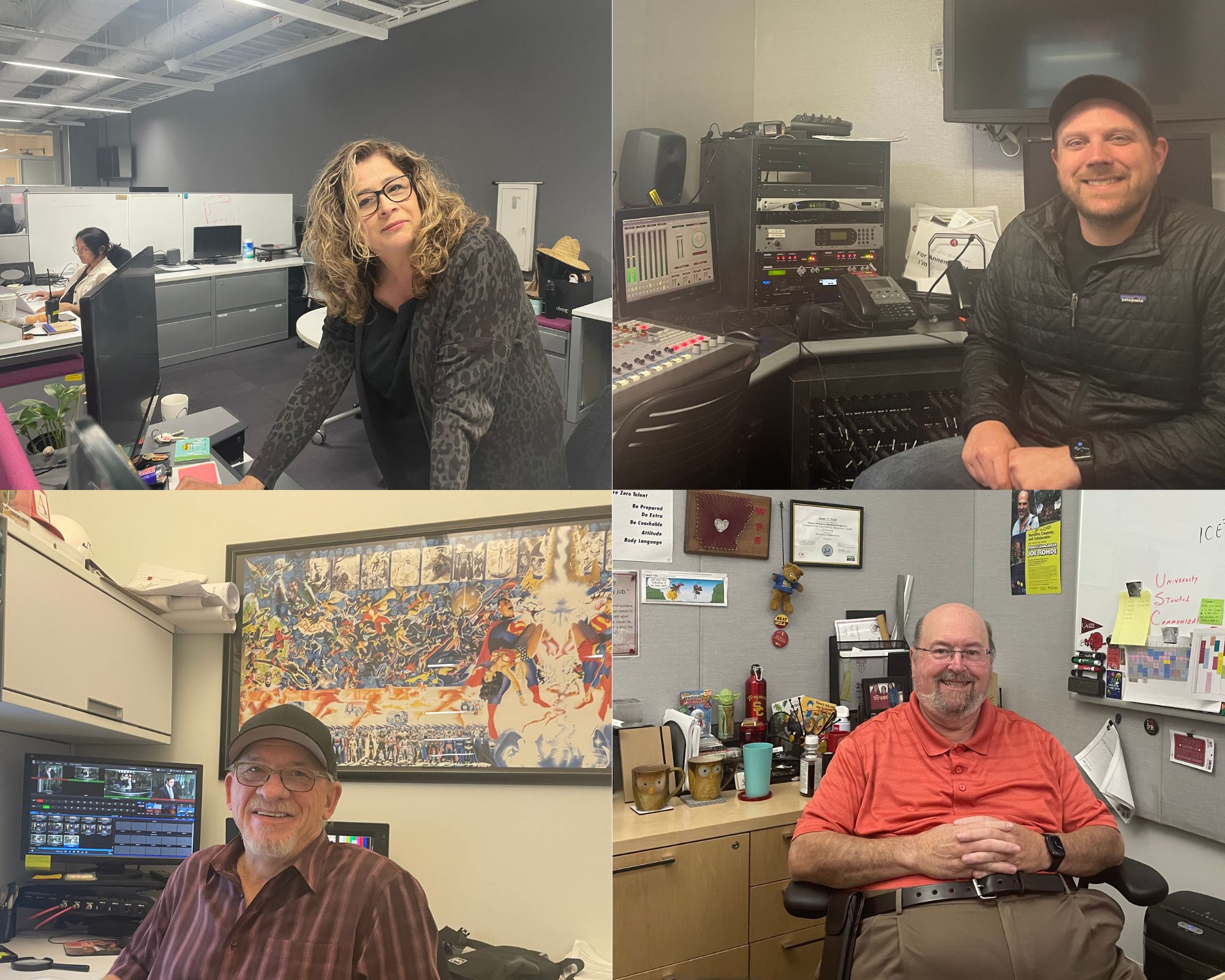
Behind-The-Scenes, Underground and Front Facing: University Support Staff’s Lives and Struggles
LOS ANGELES — Donation checks, Amazon orders, and bundles of The Wall Street Journal. Weeks of campus lockdown had meant heaps of packages had collected at the University of Southern California’s central mailing facility. Patricia Carvajal had been tasked with collecting the hundreds of pieces of mail for faculty, staff, and students of the Annenberg School of Communication and Journalism, and mailing them out to their respective homes. Normally students and staff would come to pick up packages at the mail room but COVID-19 had prompted a closure of campus that left crucial packages stranded inside empty buildings. From April 2020 till the summer of 2021, Carvajal drove out to campus twice a week for the same purpose. Even at the height of the pandemic when people doused their groceries in sanitizer and wore rubber gloves to avoid contamination, Carvajal sorted and forwarded hundreds of letters, packages, and cheques by hand to make sure people got what they needed to keep going.

Jim Yoder, the events coordinator at USC Annenberg, described having to shift his whole production strategy for events to suit an online format. He suddenly found himself in charge of producing events through new software like Zoom which was unfamiliar to him and most of the world. Annenberg alone puts on an average of 500 events per year, and Yoder had to shift them to an online platform with a week’s notice. Yoder and the whole events team had to deal with everything from connection issues to Zoom bombers and really had to go the extra mile to make the Zoom meetings seem like legitimate productions.
The experiences that Yoder and Carvajal detail do not stand alone or are uniquely situated, instead they align well with the experiences of university support staff across the country. The COVID-19 pandemic exacerbated the inequalities that characterize the higher education sector in the United States, and academic studies are now being done to understand the extent of the inequities and disparities. Support staff across the country reported additional workloads, labor inequities, and increased stress, and reported concerns about being asked to put their well-being and health aside for occupational and institutional needs.
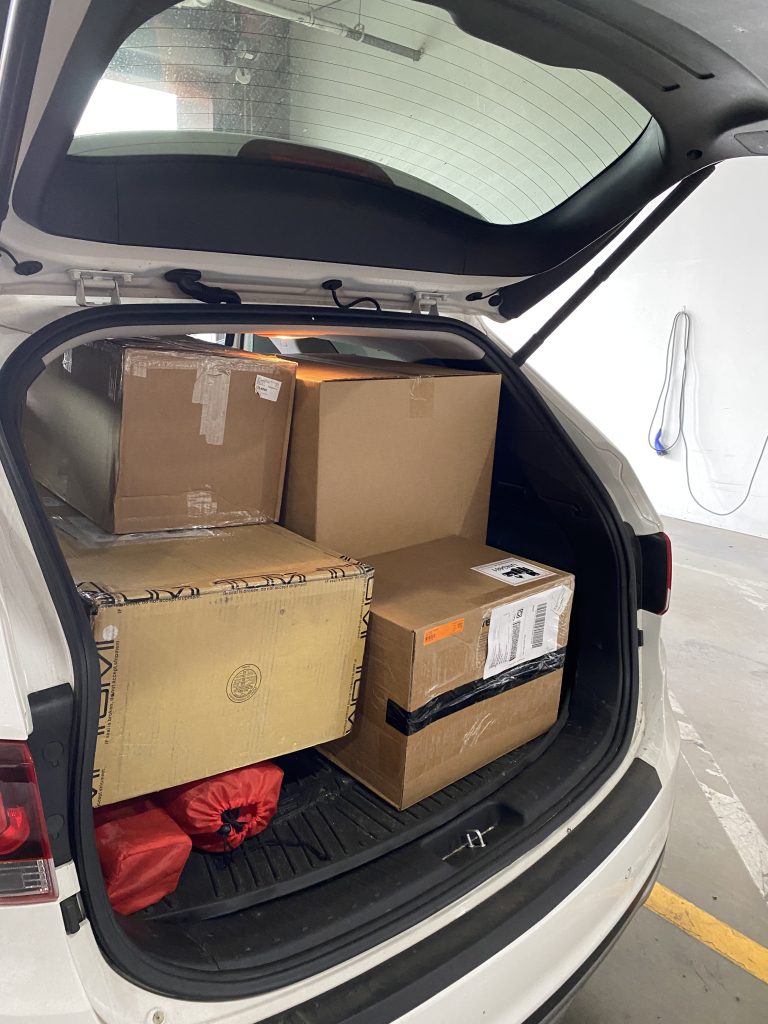
“In a lot of ways, I believe that the COVID-19 pandemic just further showed us who and what higher education institutions care about and prioritize,” Jordan Harper, a Ph.D. candidate at USC’s Rossier School for Education researching organizational change in higher education, explained in an email. “And the staff is often not in that number.”
The Technical Services and Operations office, or TechOps, is the all-encompassing department that houses the facilities, operations, classroom support, and Information Technology employees for USC Annenberg. Its scope of duties resembles those of support staff across universities. Even as students and faculty dispersed off college campuses to their homes across the country in March 2020, it was TechOps staff like Yoder and Carvajal who kept the show running. Ever since March 2020, the office has had to continuously recalibrate its efforts to be in sync with the changing local, state, and university guidelines for social distancing, masking, and sanitization. During the first summer under the siege of the pandemic, Carvajal met with designers and faculty to reimagine the layout of two buildings that house Annenberg to fit the demands of social distancing. Those plans, which took the TechOps team months to finalize and execute, bit the dust when the university announced that the campus would not be reopening for Fall 2020.
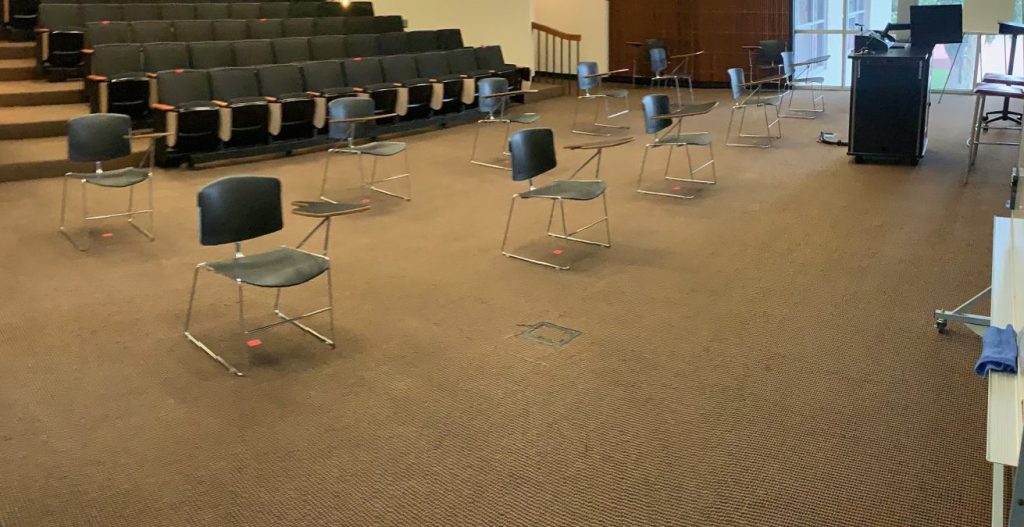
This back and forth between universities’ plans for online, hybrid, and in-person instruction modalities brought forth a significant increase in responsibilities for support staff across college campuses, as these decisions were being taken by senior leadership but the burden of quick materialization and implementation was laid upon mid-level management and employees in the universities.
“We had to restructure the whole facility, and find how we could fit all the classes in here while doing social distancing,” Christina Bellantoni, the director of the Media Center, the school’s cutting-edge newsroom facility, and a professor of Professional Practice at USC Annenberg, said while recalling the tenuous summer months of 2020. “When we eventually did not come back in the fall, we had staff going to students’ houses to give them equipment or shipping things out so we could keep producing our news shows.”
Sebastian Grubaugh, a technology supervisor at the Media Center, is responsible for walking students through the technical aspects of journalism by conducting training workshops for software and equipment. When remote production did not meet the qualitative standards the media center team is used to, Grubaugh decided to do something about it.
“Zoom has really bad audio quality behind it and we wanted the students to sound good, so I ended up putting a small kit together and my wife and I drove it out to students near campus and in Malibu,” Grubaugh elaborated.
In the immediate aftermath of campus closures and the move towards online teaching, the TechOps staff found themselves at the forefront of distributing devices, training faculty, and organizing virtual support and troubleshooting for faculty and students. The Classroom Support division was crucial in organizing training workshops for faculty who were not well acquainted with technology so they could still continue teaching remotely.
“Because we are technical services and operations, we were responsible for the instructors getting computers, deployment, internet in their homes,” Carvajal said, recalling the sudden surge of tasks that overflowed the TechOps office as work-from-home notifications went out from the Los Angeles County and University administration. “We are the hub for Annenberg, most things are funneled through our office so it (COVID-19) was more impactful for our office than some other departments in the school.”
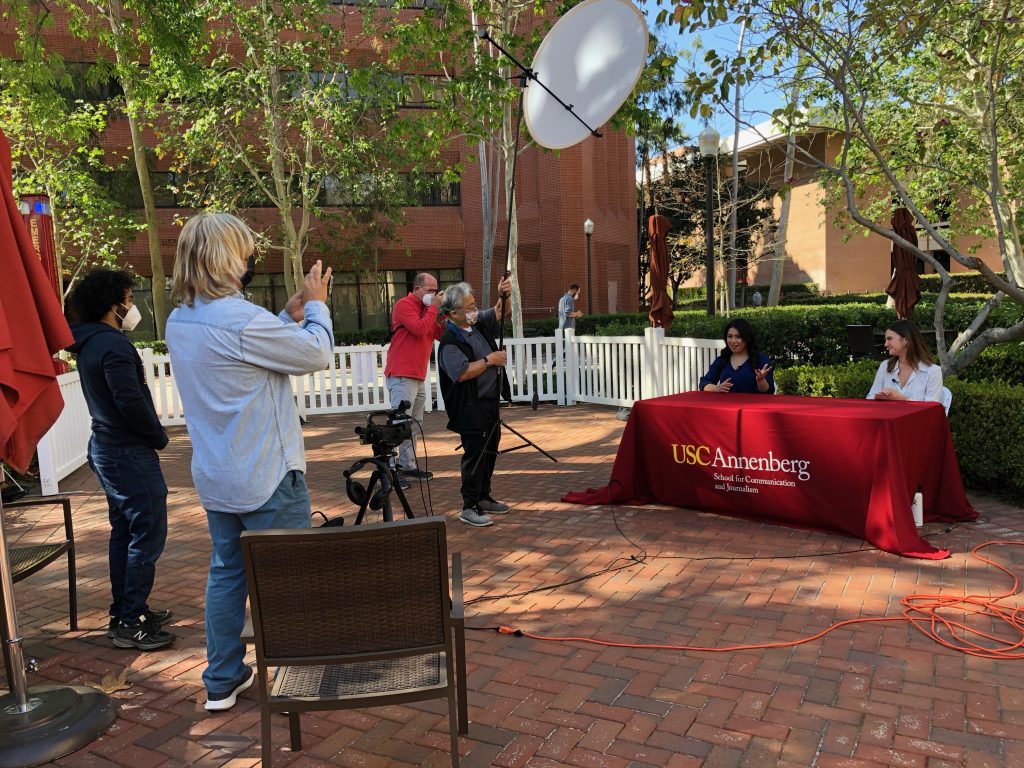
Bellantoni was also newly pregnant in March 2020 and had been planning on telling her Annenberg colleagues the news after spring break. As it would happen, USC, like most universities across the country, would not welcome students and staff back to campus for months. As time went by, she found herself progressing through the pregnancy while teaching and working for hours on end from the uncomfortably rigid chair in her dining room. She credits the TechOps staff for getting her special permission to come onto campus and retrieve her office chair.
Bellantoni also recalled the unique ways in which the support staff helped set up tents outside the building so she could teach professional workshops to small groups of student members of Annenberg Media, the school’s very own multimedia news outlet. When Annenberg Media reporters needed to get into the building for special coverage on the night of the U.S. Presidential Election in November 2020, it was the combined efforts of TechOps staff and Bellantoni’s team that made it possible.
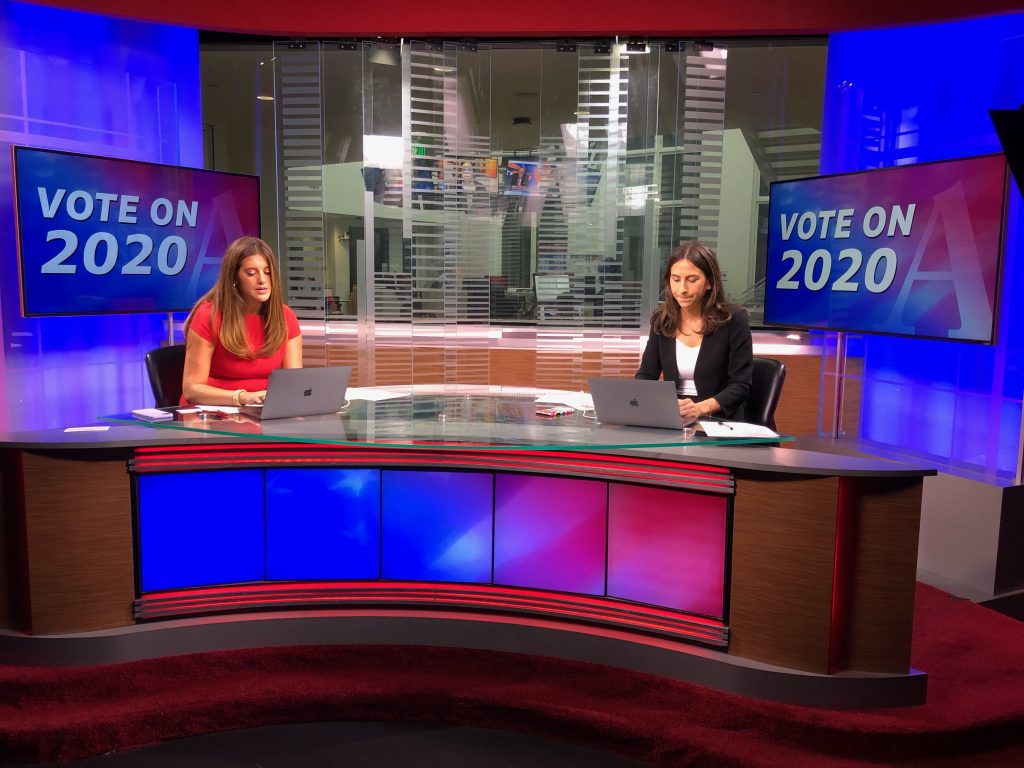
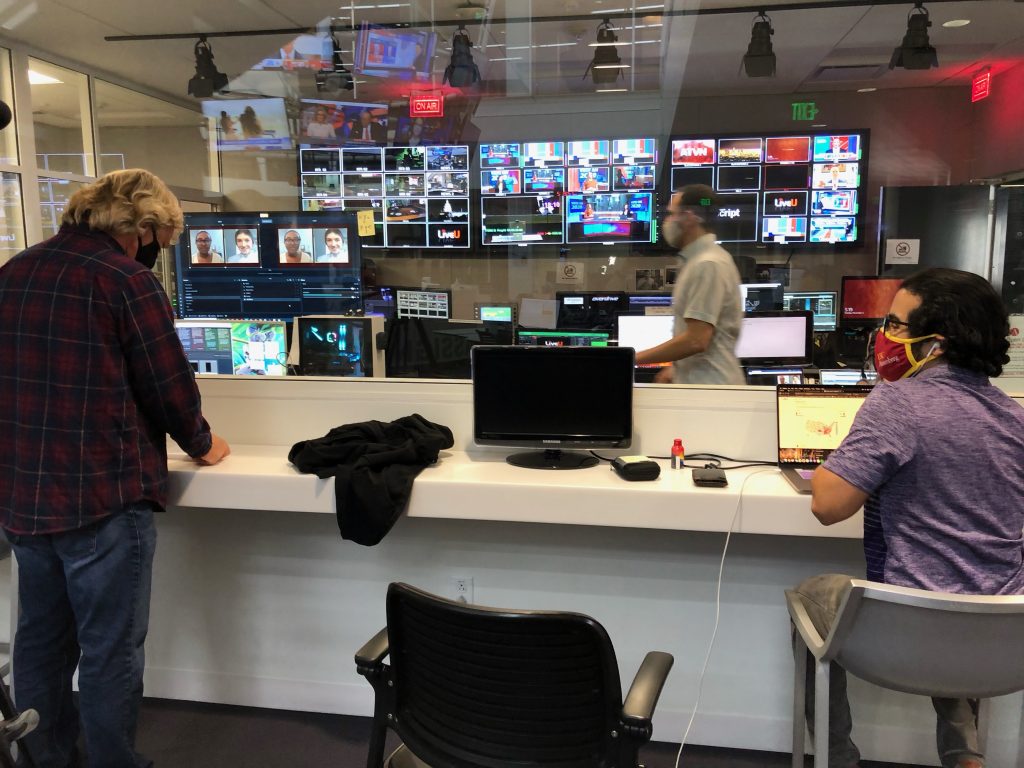
Chuck Boyles, the director of media technologies for the school, worked closely with Bellantoni and wider Annenberg faculty to find creative ways to ensure that Annenberg Media’s broadcast news network could keep remotely producing content as faculty and students became dispersed across the country and the world. In addition to restructuring video and audio production to a remote modality where most students and faculty did not have access to equipment, Boyles and his team also had to figure out novel ways of content sharing when the university campus remained completely off-limits. Content-sharing platforms are key for Annenberg’s pedagogical ethos as most classes involve group multimedia projects and close collaboration between faculty and students. After running through different alternatives, Boyles and his team set up multiple accounts on the Adobe Creative Cloud for the whole roster of classes so class cohorts would have designated accounts.
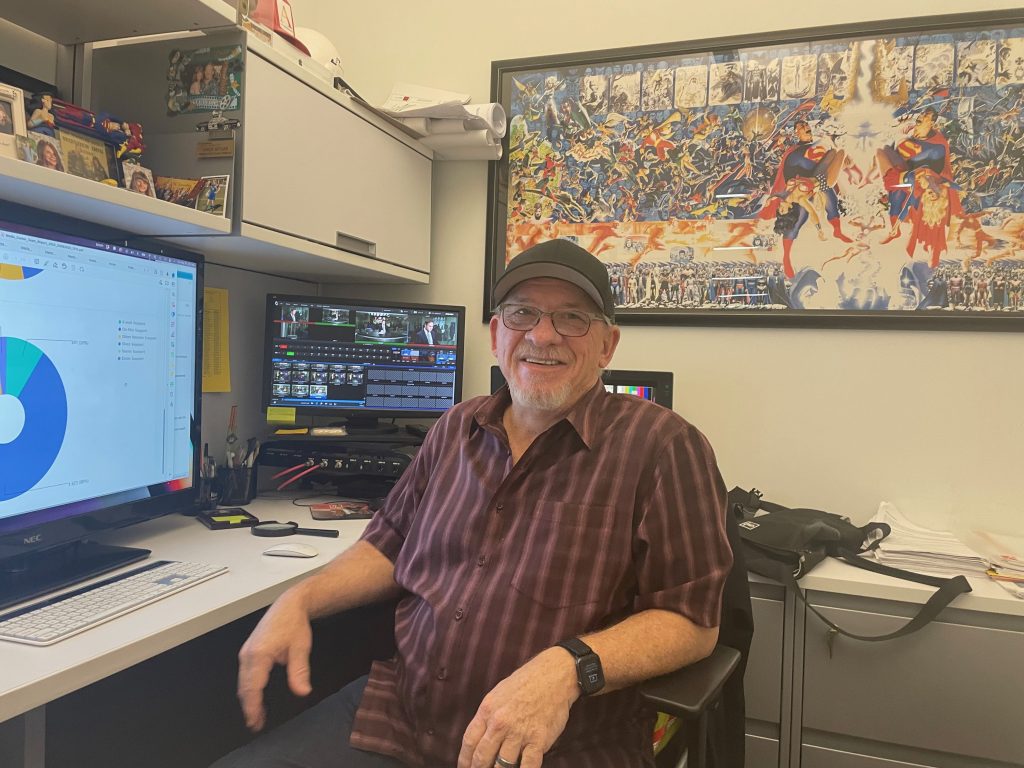
“I remember coming back from spring break and my entire team was in disbelief, and there was a lot of pressure on me to figure out how we were going to make it all work,” Boyles said, reflecting on USC’s sudden decision to shut down campus in spring of 2020. “The content production software that we use is only licensed to be used in the computers within the media center, and I had to try and figure out how students and faculty could remotely access those computers since we were not allowed to come to campus at that time.”
USC returned to campus in the fall of 2021 but the looming scare of COVID-19 case spikes and the fluid masking and social distancing rules only allowed for a hybrid pedagogical modality. While the staff was happy to have students partially back on campus, the remote teaching format had only just been completely debugged. Hybrid classes came with their own set of hiccups and logistical challenges. Zoom functions had to be installed in the Classroom and newsroom equipment, and faculty had to be trained in holding hybrid classes that could engage both in-person and online students and speakers.
The pandemic resulted in an onslaught of support staff leaving their positions within universities to pursue more lucrative careers. According to a 2022 survey of 3800 higher education staff members, 55% were considering leaving their positions in the coming year. Seventy-six percent of respondents said that concerns about salary were driving their concerns for departure. A recent study of student affairs professionals navigating parenting during the pandemic also found that many participants had contemplated leaving their institution after seeing their colleagues depart for positions that not only offered pay at two to three times what higher education could offer but offered more flexible work arrangements and less demanding hours. Although low compensation was not new, the pandemic pushed much of the staff to a breaking point in re-evaluating their priorities.
“Support staff in higher education have been leaving their institutions in droves for many years,” Harper explained in an email. “Support staff are seen as in the academy, but not of the academy, and institutions actually see them as replaceable, so they do not work hard to retain them. Support staff love the work they do, they love the place that they work, but unfortunately, love doesn’t pay the bills.”
Dr. Kevin McClure is an Associate Professor of Higher Education at the University of North Carolina, Wilmington who has been researching the inner workings of higher educational institutions as workplaces for years. According to Dr. McClure’s interlocutors, support staff felt a certain level of betrayal that the institution was even willing to put them in harm’s way and, in some cases, view them as being somewhat disposable.

“I’ve talked to people about this feeling as though we kind of entered into this crisis mode with the start of the pandemic, and we never really came off of it”, Dr. McClure said, explaining the exponential number of resignations in Higher Education ever since March 2020. “And you can’t really be in a multi-year crisis mode without it having some real costs.”
Departures have been frequent in TechOps too in the last few years, and leadership has tried to cope with the bleeding of employees by hiring temporary workers on short-term contracts.
“We see all the money that comes in, and we see the disparity between the higher management and the staff, who are the people that are actually getting the work done,” Carvajal said, giving a reason for the declining levels of morale within TechOps after the pandemic. “It’s discouraging because as a private school, there is a lot of money but it’s not being trickled down to staff and that can be disheartening to the staff, and it makes us feel like USC doesn’t really care.”
Carvajal has worked at Annenberg for about 19 years and moved through various roles within the TechOps office. She is an alumna of the communications program at Annenberg herself. She says it is that connection that continues to reaffirm her faith in and commitment to students and faculty at the school.
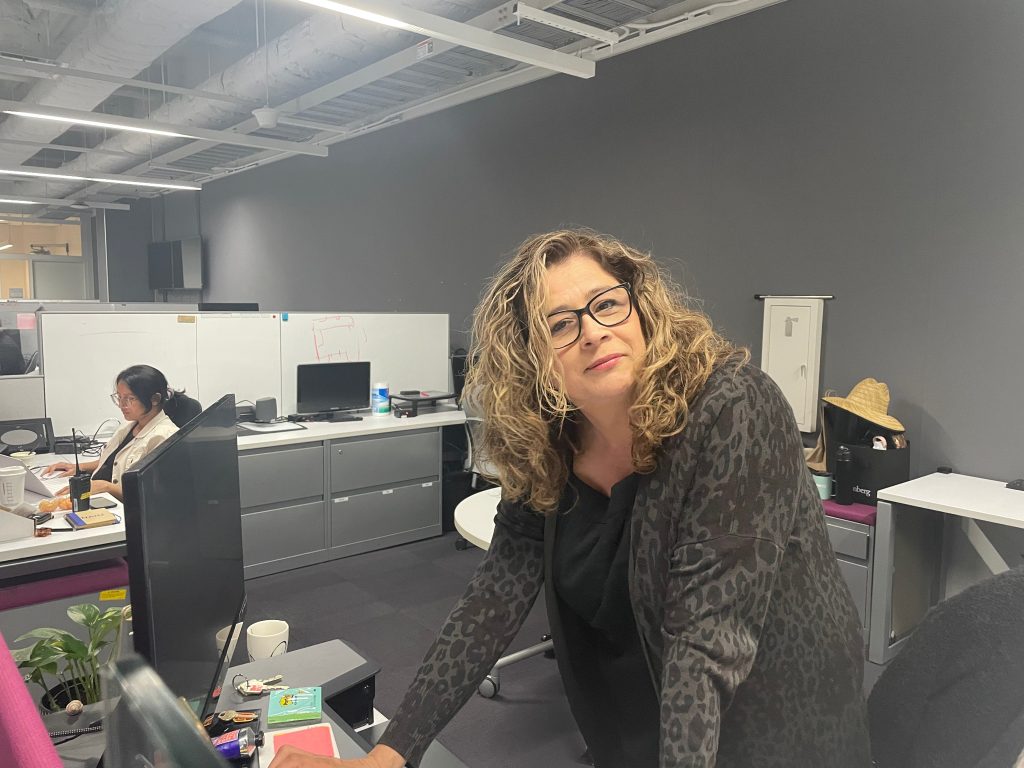
Yoder has now worked for Annenberg for over two decades, but he previously worked with Billy Joel, Elton John, and Alice Cooper before coming to USC. When probed about why he has stayed for so long, he points to a picture of three women behind his desk.
“Those were my first student workers, and the interactions I have had with students during my time here is invaluable,” Yoder reminisces as he takes the picture out of the frame. “No amount of money could buy me that”.
Grubaugh describes his position in the media center as a fortunate and rare one as he gets to interact with students, faculty, and staff.
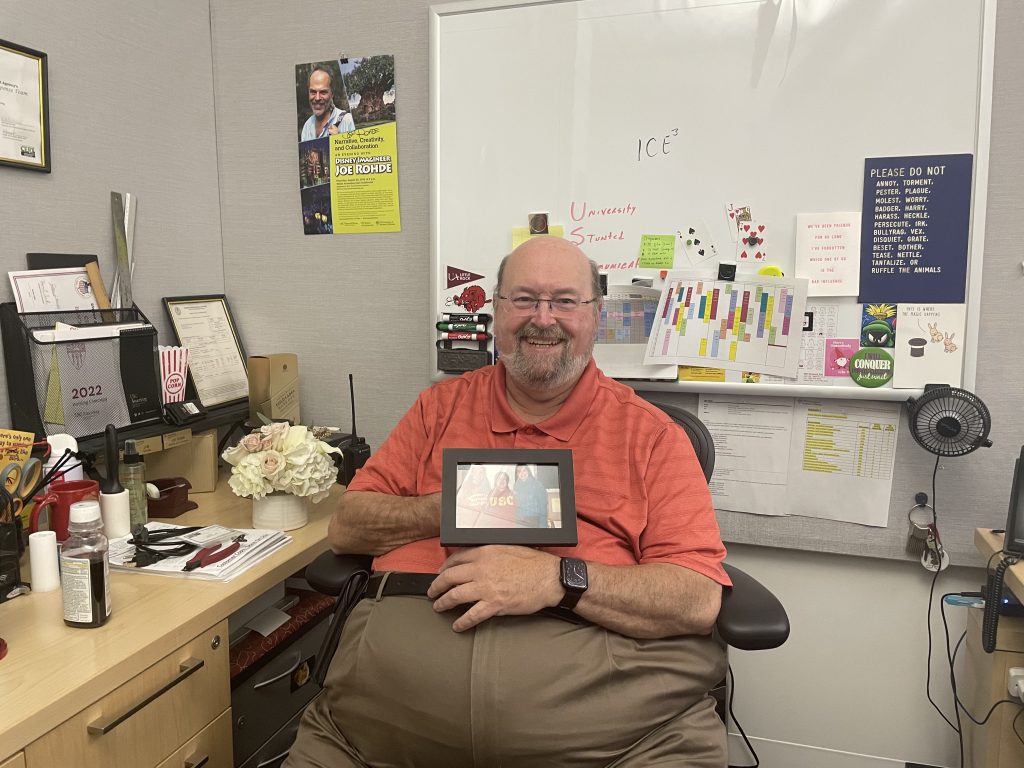
“It’s a pleasure when people who come into the program with the least training leave with the most skills, that’s the favorite part of my job.”
Hi, this is a comment.
To get started with moderating, editing, and deleting comments, please visit the Comments screen in the dashboard.
Commenter avatars come from Gravatar.